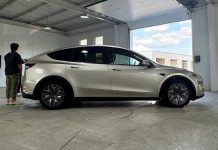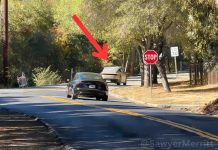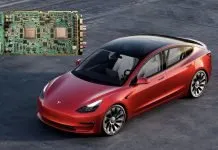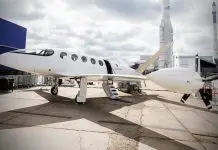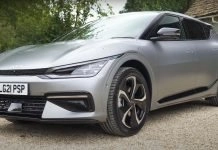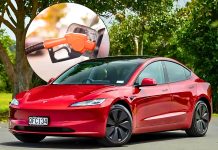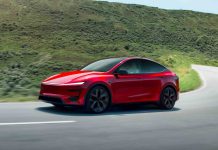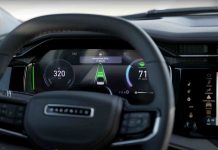Tesla has officially introduced new production-ready Cybercab pictures, which is a big move by the company in its bold Robotaxi project. In classic Tesla style, the group took the autonomous futuristic car on an In-N-Out drive-thru, which was a recreation of the most well-known scene when the Cybertruck was introduced to the world in the same venue.
The relocation is an indication that Tesla is extremely confident that the Cybercab is approaching final validation sooner, and the design is now near certain to become a reality.

Design Evolution: From Prototype to Production
The most recent Cybercab design features a plethora of refinements over the first-generation prototype, and the vehicle concept has a more finished, road-ready look without losing the Tesla-clean, minimalist aesthetic. These minor but significant updates prove the fact that Tesla is concerned with the real-life functionality and rules compliance, as well as user experience.
The following is a closer examination of what has changed:
- Re-designed headlights containing Orange Reflectors: The new headlights are more of a production-oriented product in that they are made with orange side reflectors that have met the standards of road safety.
- Front Orange Reflectors Near Wheel Arches: These reflectors also increase visibility at night and make the design correspond to North American car standards.
- Larger Front Bumper Lip: The bumper lip is slightly extended to provide the Cybercab with a firmer, more aerodynamic appearance, as well as improve the safety of pedestrians.
- Front License Plate: The fact that there is a front license plate holder is an indication that the design is heading towards regulatory preparedness.
- Unpainted Side Repeater Cameras: Tesla has decided to use bare and utilitarian camera enclosures, which could make it easier to test and calibrate the sensors in the validation process.
- Forward-shift Side Cameras: It is the repositioning of the side repeater cameras to show optimization towards improved coverage and reduced blind spots.
None of the Tire Paint or Stripe: The aesthetic tire markings of the previous prototype are abandoned, and this adds to the clean, functional appearance of the production model.
B-Pillar Modifications: The B-pillar has been partially pushed forward, and a lower-fit camera is placed, potentially providing more cabin and autopilot visibility.
Enlarged Door Panels: The increased size of the door panels indicates that the door mechanism is sophisticated, and there is a possibility that the panels were made so that passengers could enter and exit more easily.
Temporary Side Mirrors: The new design will have side mirrors, probably necessary to be tested, that can be removed or substituted with camera-based systems when approved completely.
Function Meets Form: Designed for Autonomy
The Cybercab is not just another Tesla, but the foundation of the Robotaxi network is a vision that Millions of autonomous Teslas will serve as self-driving cabs all over the world.
Tesla operates with a different strategy compared to its competitors, such as Waymo or Cruise, as they are based on their existing vehicle architecture. The Cybercab, which is supposed to be based on the same core hardware and software as Tesla more widely, might significantly lower the costs of deployment and scale up.


